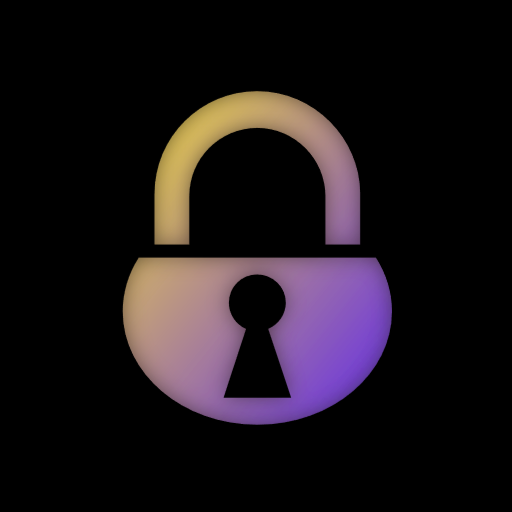

Unfortunately, it doesn’t seem to work (I think it’s a Wayland thing)
Hi, I’m sbird! I like programming and am interested in Physics. I also have a hobby of photography.
previous scheep on lemmy.world: https://lemmy.world/u/scheep


Unfortunately, it doesn’t seem to work (I think it’s a Wayland thing)


Oh, thanks! I will try that then


For gestures, it’s no problem, as you can map touching your cursor to the corners for either “overview” (like GNOME) or just applications in the current desktop. I have it set to that right now.
I just have howdy disabled when logging in now, typing in my password is fine. The Nextcloud issue is really weird so I will try and file an issue, thanks!
This isn’t a TLDR, is it?
I would say try a few out, see which DEs (desktop environments, pretty much the part of the OS that you look at) you like. I recommend trying Fedora Workstation (which is GNOME, a purer form of it compared to Ubuntu’s flavour, and is unrelated to gnomes of the fantasy world), a KDE Plasma distro (like Kubuntu or Fedora KDE), as well as Mint (which is Cinnamon) and ZorinOS (I think it uses a custom variant of GNOME, but I’m not sure).
You either love or hate GNOME, there’s a lot of padding, and it’s very “minimal” and “clean”. Some people say the UI is similar to Mac in that it has a bar on the top and the “dock” (GNOME’s version of the taskbar) looks very similar to Mac. It also has a bunch of touch gestures and such, so it would be good if you have a touchscreen laptop, for example. Make sure to look at GNOME extensions, which helps you customise GNOME to your liking (e.g. transparency, having the dock always be shown kind of like one Windows)
KDE Plasma, out of the box, looks similar to Windows. It, however, is the most customisable and you can change pretty much anything (position of the taskbar, text size of different parts of the UI, colours of all the buttons, etc.) and it’s kind of overwhelming. I particularly like KRunner (which is kind of like Spotlight on Mac and lets you search apps, files, settings, etc. straight from the desktop). Currently I’m using KDE Plasma.
Cinnamon is Linux Mint’s homegrown take on GNOME, which tries to mimic Windows 10 to ease the transition to Linux. Mint focuses on the usability of its GUI apps, so you won’t have to touch the terminal as often (I do recommend you learn how to do simple things like apt to install apps, it’s really useful!). If you don’t like the excessive padding and touch-optimised design of GNOME or think KDE Plasma isn’t for you, Cinnamon might be what you want.
There’s also a bunch of other DEs like Xfce (which is lightweight and meant for lower end devices), MATE (which keeps the design of old GNOME, so it looks less “modern” than other DEs), and COSMIC (which is by System76, recently went from Alpha to Beta so it isn’t perfectly stable yet, but it looks pretty cool with tiling and such).
Take your time to pick, you can always swap out your DE (that’s one of the cool things with Linux, you can literally change the desktop of the entire OS if you want to! It’s kind of insane if you think about it. Recently, I switched from GNOME to KDE Plasma with little issue on Fedora. So don’t be afraid to pick the “wrong” desktop, you can always change it after the fact! You can even install multiple and choose which one to use when you log in, but that will mean having an excess of default apps, meaning multiple file managers, multiple calendar apps, etc.)
Mint looks pretty Windows-like out of the box too. Both Cinnamon and KDE Plasma can be customised extensively too, which is nice. Mint is really good for beginners, very user-friendly and such. Fedora is plenty user-friendly too (and probably Kubuntu, but I haven’t used that one yet), but Mint takes it a step further in my opinion. This is coming from a Fedora user. I do agree that Mint and Zorin shouldn’t be the only options that beginners should consider. On the other hand, KDE Plasma shouldn’t be the only option either. The best way to pick distros, in my opinion, is by creating a Ventoy drive with Mint (to try out Cinnamon), Fedora Workstation (to try out GNOME), and either Fedora KDE or Kubuntu (to try out KDE). Cinnamon, GNOME, and KDE Plasma are all great in their own ways.
Currently I am using KDE Plasma as I like the customisability, but I can see the appeal of GNOME if you want something that looks sleek and “minimal” (or if you really love padding), and Cinnamon is a bit more like Windows 10. They all have their own aesthetics (contrasty KDE vs maximally padded GNOME vs colourful Cinnamon)


deleted by creator


Oh, and one more thing! The VPN client I use (“Clash Verge”) doesn’t work with Firefox on KDE when “System Proxy” is selected on KDE, but it did on GNOME. You have to select “TUN mode” (which reroutes ALL network traffic through the proxy). Why is this happening, and how do I fix it?


LibreOffice (the UI seems to be much better on Linux vs on Windows), Firefox, Thunderbird, Tauon (the only music player I could find without iTunes era UI and has a usable shuffle function. Gapless/G4Music and Amberol are slick GNOME apps, but shuffle is terrible on both), Joplin (for notes), Okular (PDFs), VSCodium (code editor), Godot (game engine), ES-DE + RetroArch (for emulation), nomacs (images), Celluloid and Clapper (video player), FreeTube (YouTube client), OBS studio (screen recorder), Aseprite (pixel art, the editor I use the most, very awesome!), GIMP (photoshop, don’t really use this one as much as I never really used photoshop), Inkscape (illustrator, this is the editor I use the second most, it’s awesome), RawTherapee (Lightroom, I will eventually learn how to use this, but I am putting it off right now), FreeCAD + Blender (3D modelling), Kdenlive (video editor), OrcaSlicer (3D slicer), Nextcloud (self-hosted file backup + a bazillion other things), Immich (self-hosted photo backup), the default Calendar app w/ Radicale (finally I can sync my calendar with my phone! You aren’t able to do the same thing with the def. cal. of Windows…), Steam (all the games I play are supported), and a bunch of CLI utilities as well (like yt-dlp).


I dual booted by “shrinking” the Windows partition by using the Disk management utility built into Windows. Then, when installing Fedora, I selected the free space available.


One thing you should do is to start with Windows and then add Linux, not the other way around. I remember someone online said Windows installation likes to occupy all of the drive/will erase the Linux partition, but I might be wrong on that. I have dual boot Fedora + Windows, and I solely use Windows for: a) using windows installation assistant when needing to reinstall windows for family and friends (apparently you can’t create a bootable Windows drive with Linux, which is kind of odd. Just getting the ISOs don’t seem to work, you have to use the “assistant”) b) Not much else actually, I use Fedora for almost everything now. There’s a Linux version of every app I use!


I use both, more backups are always better. I find these two much better in terms of ease of use (for Ente and arguably Immich once you have it set up) and flexibility (for Immich in particular)


Just checked, yep, LibreOffice has an option for autosave. No cloud sync provider needed…as it should be…


Office 365 requiring OneDrive to auto save is so dumb, I’m pretty sure all other text editors let you do it without any sort of cloud sync, let alone using the first-party provider. Then you have the requirement to sign into a Microsoft account to use Windows, forcing a dedicated Microsoft CoPilot key on laptop keyboards (it should have been a keyboard shortcut or something!), defaulting to Edge, Outlook, and Bing search, pushing Office 365 subscriptions in the SETTINGS page, the full screen ads for Win11 in Win10, the list goes on. If we had good consumer protection laws, none of this would be allowed…
It’s not just Microsoft, of course, I can say the same about Apple and Google for their respective operating systems.


Aegis seems like a pretty good 2FA app on Android from what I’ve heard. Personally, I use Ente Auth as sync is very helpful when I don’t have my phone nearby (you can either use the desktop app or use your browser, both work). Don’t think you can self-host sync, though I might be wrong. Ente Auth also works without sync, so there’s that.
I would not suggest using a password manager’s 2FA integration (e.g. Bitwarden, I think Proton Pass has one if you use that?) as it kind of defeats the point of 2FA, since if someone got access to your password manager, they would also get the 2FA codes.


KDE Connect? It also works with non-Android devices like iOS and all three desktop systems. It’s what I use to transfer files between my iPhone and my computer.


I have Joplin with Nextcloud sync. It works fine for me! It’s got a desktop app and a mobile app with, in my opinion, pretty good UI. Markdown support, syncing between devices, etc. are all there. You don’t need to connect to the network to view notes, a local copy is saved.


for me Fedora Workstation installed fine, even when dual-booting (you have to “shrink” the Windows partition first) and it works great for me. The only slightly annoying thing is that many guides and how-tos use a debian based distro vs red hat/fedora based one (apt vs dnf, .deb vs .rpm)
If you do want to install Linux, #1 thing you must do is BACKUP YOUR DATA. On the cloud, in a USB drive, an external SSD, etc. backup your data!
Linux will definitely be a breath of fresh air. I recently switched and I enjoy not being begged to use a Microsoft account, Office, Bing, CoPilot, and especially OneDrive. Linux is also super customisable, you can easily get icon packs and themes without faffing about with sketchy programs. Also, depending on the hardware, you might also get some performance improvements.
99% of things, for me, work on Linux. If your games run with the Steam Deck they should run fine with most distributions. The 1% of the time when something does not work includes OBS being stuttery due to driver issues (I had to go hunting for that, but it works fine now), but other than that Linux has been pretty smooth sailing.
Yeah, it is. It also has a an option for something like Steam Big Screen for a console-like experience too for living room PCs and handheld PCs (Steam Deck, ROG Ally, etc.)